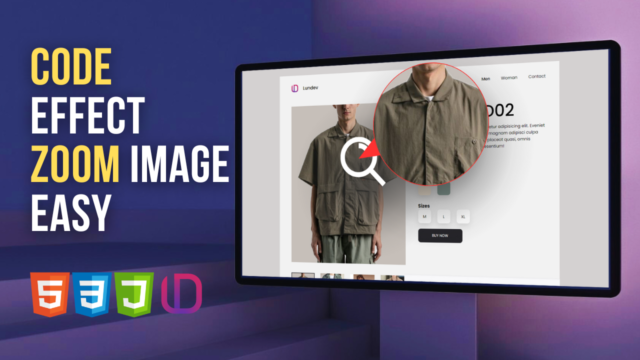In the fast-paced world of e-commerce, creating an engaging and user-friendly shopping experience is essential for converting visitors into customers. One effective way to enhance product presentations is by incorporating a product zoom feature on your website. This functionality allows customers to closely examine products, improving their confidence in making a purchase. Here are some tips for adding a product zoom feature to your e-commerce website effectively.

Table of Contents
Toggle1. Choose the Right Technology
Before implementing a product zoom feature, consider the technology you’ll use. Depending on your website’s platform, there are various methods to add zoom functionality:
- Plugins and Extensions: If you’re using platforms like Shopify, WooCommerce, or Magento, numerous plugins are available to add zoom features seamlessly. Popular options include Zoom Magnifier, Magic Zoom, and Product Image Zoom.
- Custom Development: For custom-built websites, you may need to hire a developer to create a tailored zoom solution that meets your specific needs. This option provides more flexibility in design and functionality.
2. Select High-Quality Images
The effectiveness of a product zoom feature relies heavily on the quality of the images used. Follow these guidelines for optimal images:
- High Resolution: Ensure that the images are high-resolution to maintain clarity when zoomed in. Blurry or pixelated images can deter potential customers.
- Multiple Angles: Provide images from various angles, including close-ups of important details. This approach allows users to see all aspects of the product, enhancing their understanding and confidence in the item.
- Consistent Lighting: Use consistent lighting across all product images to avoid color discrepancies, which can mislead customers.
3. Implement Intuitive Controls
User experience is key when adding a zoom feature. Ensure that the controls are intuitive and easy to use:
- Mouse Hover Zoom: Allow users to zoom in on a product by simply hovering over the image. This method is quick and doesn’t require extra clicks, enhancing the shopping experience.
- Click-to-Zoom Option: Provide an option for users to click on the image to open a larger view or zoomed version. This feature can be especially useful for mobile users who may have limited screen space.
4. Optimize for Mobile Devices
With an increasing number of consumers shopping on mobile devices, optimizing your product zoom feature for mobile is crucial:
- Responsive Design: Ensure that the zoom feature is responsive and functions well on various screen sizes. Test the feature on multiple devices to ensure a smooth user experience.
- Touch-Friendly Controls: Use touch-friendly controls for mobile users. For instance, implement pinch-to-zoom functionality to allow users to zoom in on products with their fingers.
5. Enhance User Engagement with Animation
Adding subtle animations can enhance the user experience when utilizing the zoom feature:
- Smooth Transitions: Implement smooth transitions when zooming in and out. This effect can make the experience more enjoyable and visually appealing.
- Highlighting Details: Consider animating specific details when users zoom in, such as highlighting textures or features. This approach can draw attention to unique selling points.
6. Utilize Product Videos
Incorporating product videos alongside your zoom feature can provide even more value to potential customers:
- Demonstration Videos: Create short videos that showcase the product in use. Videos can demonstrate functionality, highlight features, and give customers a better understanding of the product.
- Interactive Videos: Consider interactive videos that allow users to zoom in on specific product details as the video plays. This combination of zoom and video can significantly enhance engagement.
7. Monitor Performance and User Feedback
After implementing the product zoom feature, monitor its performance and gather user feedback:
- Analytics Tracking: Use analytics tools to track user interactions with the zoom feature. Analyze data such as click rates and engagement levels to assess its effectiveness.
- Customer Feedback: Encourage customers to provide feedback on their experience using the zoom feature. Use surveys or feedback forms to gather insights and identify areas for improvement.
8. Test and Optimize
Regular testing and optimization are vital for ensuring a seamless user experience:
- A/B Testing: Conduct A/B testing to determine the most effective zoom settings and controls. Experiment with different layouts, sizes, and features to find what works best for your audience.
- Continuous Improvement: Use the data collected to make informed decisions about adjustments and enhancements to the zoom feature. Stay updated on emerging technologies and user preferences to keep your website competitive.
Conclusion
Adding a product zoom feature to your e-commerce website can significantly enhance the shopping experience for customers. By choosing the right technology, utilizing high-quality images, optimizing for mobile, and monitoring performance, you can create an engaging and user-friendly interface that boosts customer confidence and drives sales. As e-commerce continues to evolve, ensuring your website provides an exceptional shopping experience is essential for standing out in a competitive market.


No responses yet